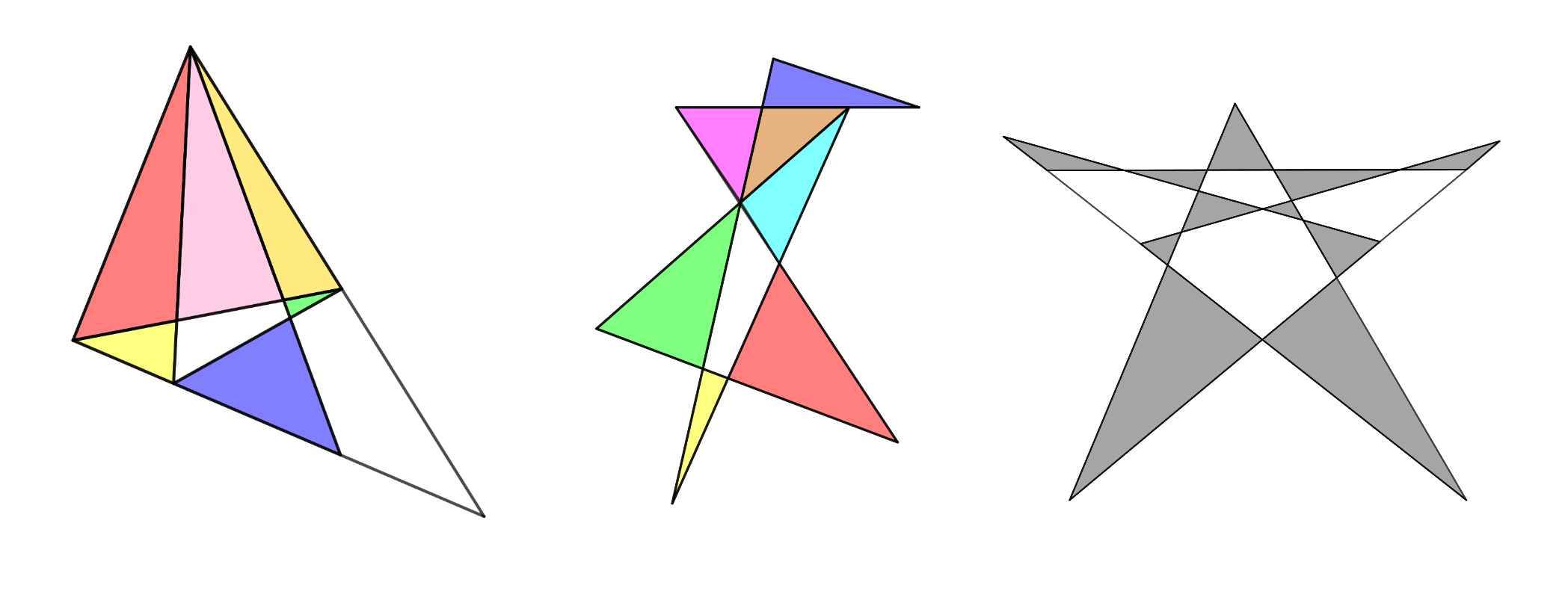


Using four straight lines, it is only possible to construct up to two non-overlapping triangles. Here are some examples:


Using five straight lines, it is only possible to construct up to five non-overlapping triangles. Here are some examples:


Notice that the first diagram has four non-overlapping triangles and the second diagram has five non-overlapping triangles. Notice also that the diagram with five non-overlapping triangles also has a pentagon which is not counted.
How many non-overlapping triangles can you make using six straight lines?
How many non-overlapping triangles can you make using seven straight lines?
Trade ideas with a classmate.
This geometry problem of finding non-overlapping triangles with sides lying on a specified number of straight lines is known as the Kobon triangle problem. Note: the Kobon triangle problem is not fully solved!
Here are some sample solutions. Students will likely find many others.
It is known that seven triangles is the maximum possible number of non-overlapping triangles that can be formed using six lines. Here are some solutions for six lines, showing four, six, and seven non-overlapping triangles.

It is known that eleven triangles is the maximum possible number of non-overlapping triangles that can be formed using seven lines. Here are some solutions for seven lines, showing six, seven, and eleven non-overlapping triangles.
